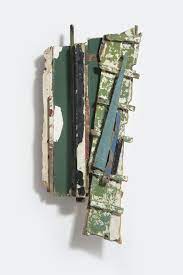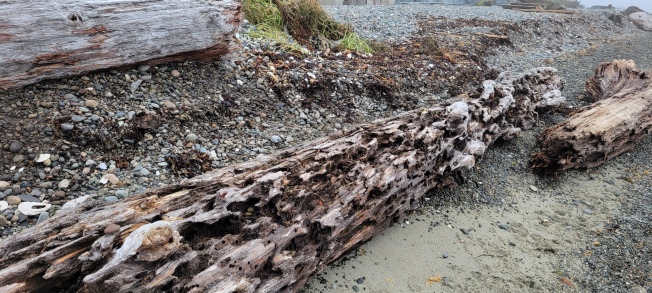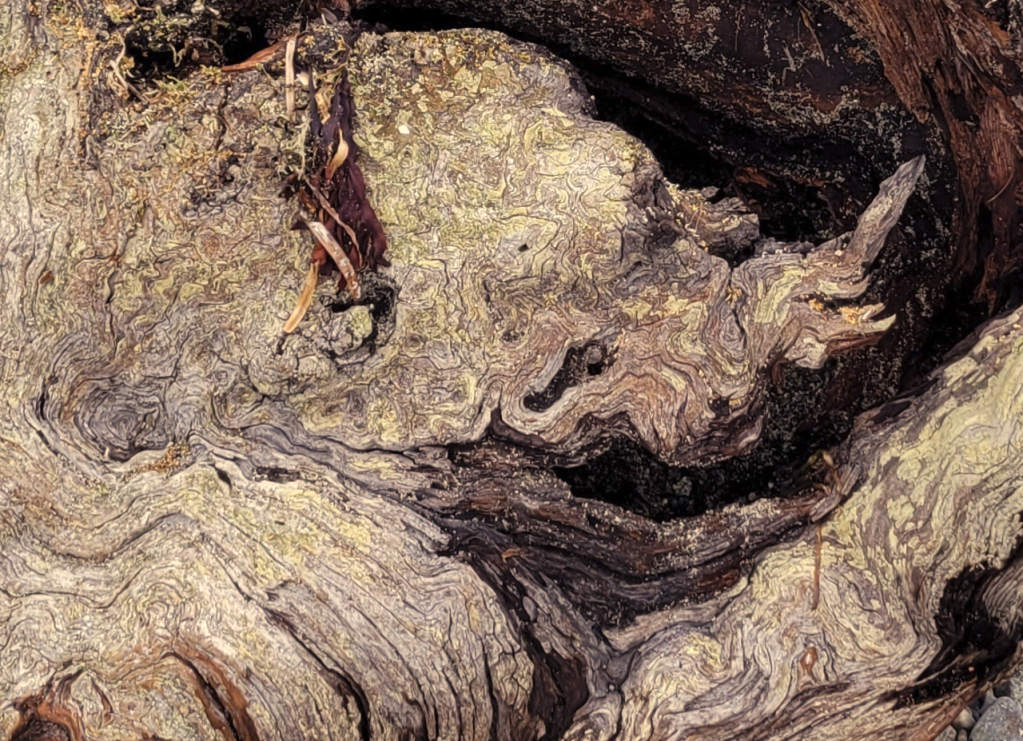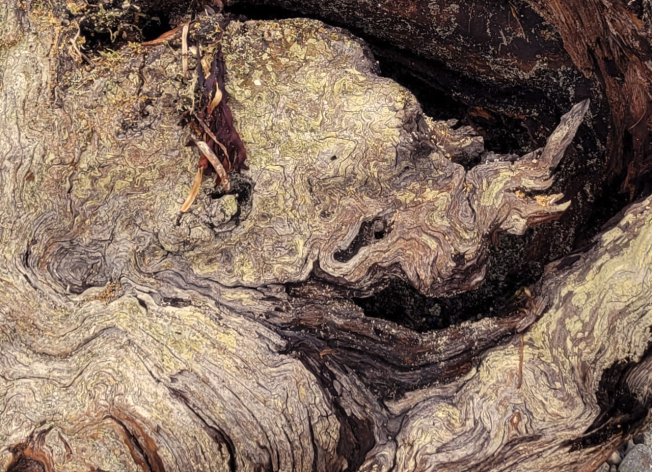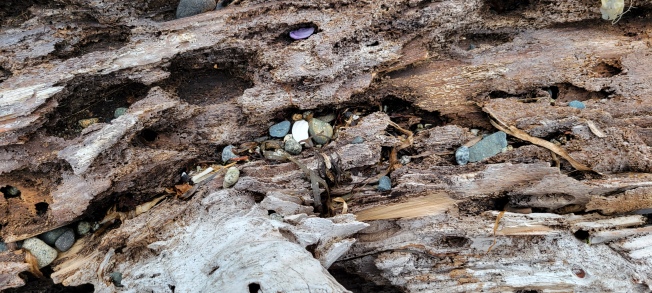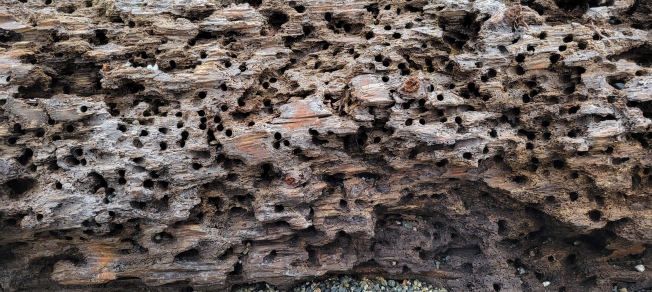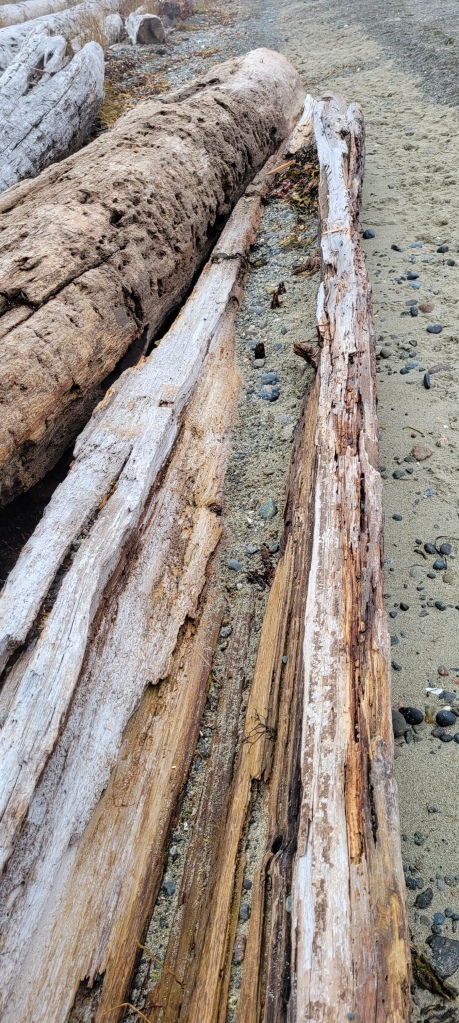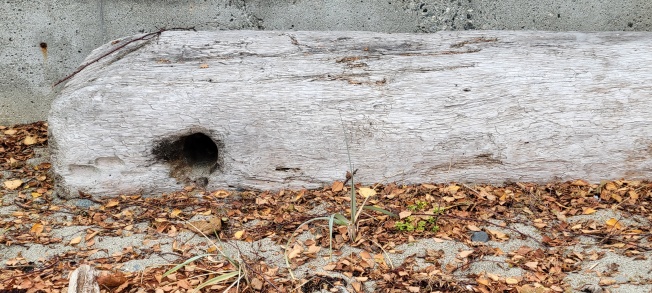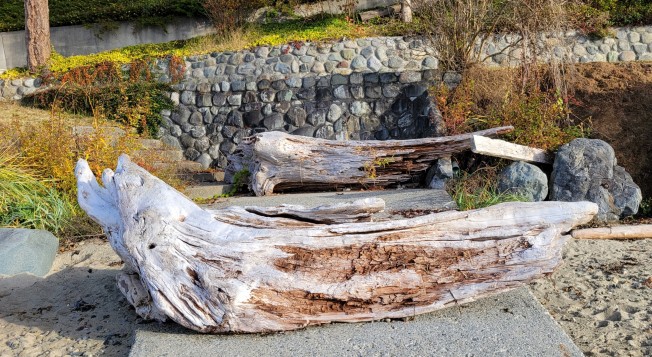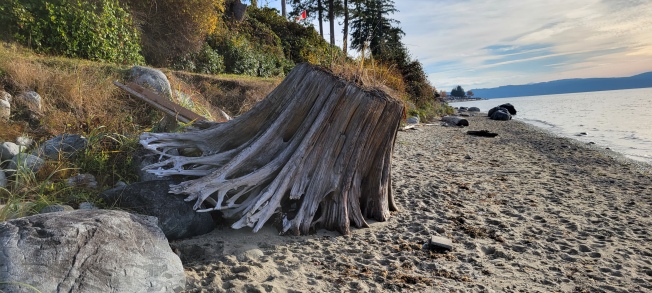Folks who live in seaside towns are very fond of driftwood. Driving along coastal roads you see artful root clusters displaying house numbers. Flowerbeds are bordered by curving logs, fences constructed from salt-weathered timbers. It inspires us to rearrange our small domestic landscapes to display its surprising shapes, to fill its cavities with garden ornaments or tiny succulents. In a small way, it illustrates our desire to bring the wild, the feral into our domestic spaces.
In his wonderful book, Wildwood: A Journey Through Trees, Roger Deacon’s chapter on driftwood begins with a climb up the stairs to Margaret Mellis’s studio in Southwold, one of the most easterly English communities on the North Sea coast. Towards the end of her long career, she began to create objects out of driftwood. Deacon writes:
Everyone in Southwold used to bring the driftwood harvest of their beach walks to Margaret’s doorstep, leaving it in the front garden for her. The best of it would find its way upstairs to the studio, where Margaret separated the painted from the natural wood, the former bleached and muted by the sun, the latter chamfered, flayed or shattered by the sea.
Deacon, who also wrote Waterlog, an actual log of his year of wild swimming in Britain, comments on the relationship between Mellis, the water and the wood:
As a sea creature herself, in that she was a regular swimmer, Margaret Mellis felt a natural affinity with driftwood. She took part in its life and knew what it was to float in the tidal currents off the Suffolk coast. Over time, water imparts an abstract quality to wood by sculpting away its inessential, softer parts, emphasizing the sinews of grain until the knots stand out like inset pebbles. Driftwood maps the movement of water around it in its own grain.
The forces that bring it to our shores are often equated with violence and rage. The same power could be said to embody the great eureka moments of love, joy, understanding – likely why we are so invigorated by standing at the shore, sucking in that turbulent air, filling our blood with its chaotic energy.
Deacon compares how important driftwood is to the ocean’s ecology to the pivotal role fallen trees play in the life of the forest. Their structures provide shelter for small animals and birds, their decay provides nutrients for all kinds of creatures. Sea and shore birds love it, ride on it, flip over the smaller bits in search of food. In the sea, small clams like the Teredo navalis or shipworm and crustaceans like the gribble worm break down the wood. Their chewing produces sawdust which adds nutrients to the ocean environment. Far from shore, small fish will congregate around driftwood because the microbes and worms it harbours provide food and shade. In turn, the small fish attract larger ones to feed on them.
Even a tree, which we think of as a fixed point, rooted as anything can be to a single place on Earth, can be imagined into a drifting nomad, nibbled by fish, wandering the oceans, ending up anywhere from Southwold to a remote beach on Hokkaido.
Or on a qathet* beach. Remote by some standards, I guess. The larger pieces that get lodged into the edge of the terrestrial world, often, in fact, protect it from the battering winds and tides. They provide very handy back rests, something to sit on or duck behind when changing out of a wet bathing suit. Children run, balancing, along their lengths, jumping from one to the next in a kind of beach parkour. I remember riding logs as a child when the warm southeasterly summer winds stirred up the water and set them afloat.
In her final years, driftwood gave Margaret Mellis a whole new way of working. It connected her to the physical place she lived and to its people. It also gave that community a way to show respect and appreciation by contributing to her work.
Whether we travel the world, or settle, wedged into a refuge of sand and blackberry vines, we are like driftwood thrown loose in the spring freshet, the rush of laughter and sorrow that make up our lives. We are everything we’ve experienced, and even as we diminish, shrink and fail, we’re returning all that we’ve been back to the world around us. We’re returning home.
*qathet is a name given to the regional district (formerly Powell River) by the Tla’amen people. It means working together. Many regional organizations have adopted this name.



